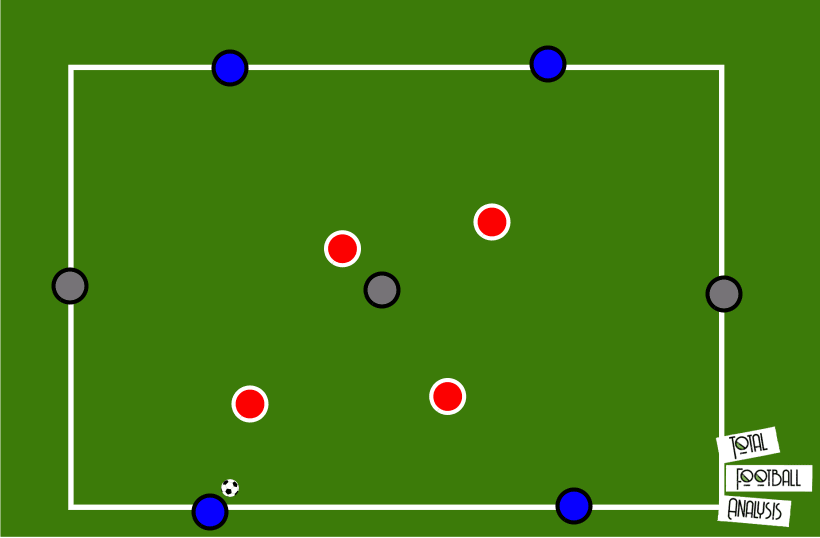What is compactness?
Compactness is a tactical term used to describe a team shape with relatively short distances between their vertical and horizontal lines. A team that is ‘turtled up’ and moves as a unit, not ceding any space between their lines and not allowing any access to the opposition could be described as very compact. Therefore, when we talk about a team achieving optimal compactness, either in attack or defence, it means that they are not too far away from each to hamper their connections nor are they too close so as to yield space elsewhere.
It is important to note that compactness can be applied both to attacking and defensive tactics. In defence, as we have already mentioned, it means not ceding space to the opposition while in attack, it generally refers to the team on the ball being close enough so as to establish easy connections and passing lines between their players.
Some other tactical terms that are closely related to compactness are shape, space occupation, connections, pitch division, access, defensive and attacking phase and spacing.
Examples of compactness in football
Compactness is something every coach would like to established in their general tactics. Of course, making the pitch big and stretching the opposition is key when advancing the ball but achieving optimal compactness also ensures other goals are met more easily throughout a game. So in attack, having players positioned in different zones but at an optimal distance to each other is key to outplaying the opposition block.
On the other hand, in defence it could mean the team without possession having multiple players close by to close down the attackers and provide support in certain areas. Similarly, optimal compactness also lends itself well to transitions as the players are quick to combine as soon as possession is won. Equally important, compactness offers access to the ball and therefore eases the deploying of pressure for the defenders as they can collapse from multiple angles and zones.
Why use compactness?
There are several benefits to a team successfully incorporating compactness into their tactics, some of which have already been mentioned for both the attacking and the defensive phase of play. However, arguably the biggest advantage of having compactness is the positional superiority it offers.
The team that controls the space well through the compact unit they’ve deployed is more likely to assert superiority in that specific area of the pitch. Of course, it’s difficult to cover a large portion of the pitch in a highly compact shape but it makes prioritising certain zones much easier to achieve.

